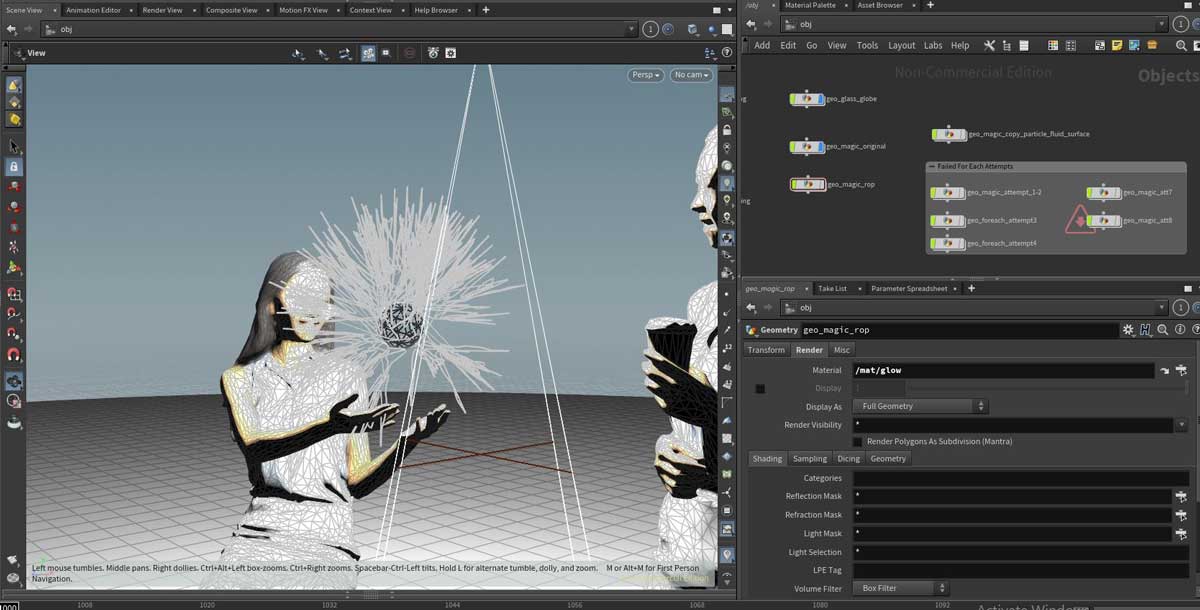
How do I Become an Effects Animator?
What is an Effects Animator?
The Effect Animator creates visual effects for natural elements like rain, snow, fire, and other simulations. Their job focuses on creating these effects either by hand or through computer animation software, in which they create procedural animated effects like storms, tornados, explosions and more. So, every time you watch a movie, TV series, or play a game with natural phenomena, that is the work of an effects animator having a lot of fun.
Where can I see examples of Animated Effects?
You have seen the work of an Effects Animator in more ways than you can imagine and perhaps didn’t even notice. The movies you watch on your TV screens daily are full of effect animation. For example, many movies are filmed on sunny days, and the effects animator is asked to add a storm or a blizzard to the scene. Another example is in video games, where the player picks coins, and there’s a shiny effect, or a magical trail once appears when the characters swing their arms. Movies and video games are full of special effects and animation created by professionals.
What Skills should I have to become an Effect Animation Artist?
You first need a passion for art, creativity, and computer simulation software. If you are intrigued by movies, video games, or any other digital art form, you may have an effects animation artist profile. Some skills involve using computer simulation software such as Houdini from Side Effects, Nuke for compositing layers, and good old mathematics and physics. Yes, you read that right. Mathematics and physics are a lot of fun when you can see them visually. For example, effects animators need to know concepts like velocity, gravity, vectors, vortex, wind, and other images to create the jet stream of a movie like “Top Gun” or a building collapsing in the film “Transformers,” or perhaps calculate the wind in the magical dust of a film like “Harry Potter.” So, the skills you need to learn are a combination of imagination, free-hand creativity, and computer simulation software to create your effects.
Is it Easy or Challenging to become an Effects Animator?
Like every other position in the animation industry, becoming an effects animator is a decision based on your creative and technical profile. Effects animators are naturally technical and are friends with computer software and programming concepts. Effects animators can start with an introductory course to see if they like it and are a good fit for this position. Then, like every other skill and profession in life, practice makes perfect, and new skills will become second nature.
As a Beginner, where do I learn Effects Animation?
We recommend that you start with an introductory course in Effects Animation. At VANAS, we have a variety of entry-level classes in which you can get hands-on experience. For example, you can start with the Introduction to Digital Arts and learn effects animation through a series of projects led by an industry effects animator.
You can also learn on your own time by joining VANAS Plus, which has courses on effects animation for beginners.
As for software, as a beginner, you can use After Effects to add effects to text, circles, or even footage. Many artists use After Effects for small productions. However, in a professional studio setting creating effects for high profile movies and video games, Effects animators use Houdini Side FX, Maya Computer Animation Software, Nuke, and other industry software.
Later on, if you find the process of creating effects exciting and intriguing, we recommend you enroll in an entire diploma program to become an Effects Animator.
Is it Worth going to School to Study Effects Animation?
Many schools offer visual effect programs of study, but visual learning effects is not the same as learning to create effects animation. For instance, in a visual effects course, you’ll learn compositing, green screen, shooting footage, keying, etc., but these skills are not what an effects animator does. Furthermore, visual effects courses may be part of their curriculum to create a couple of effects, but these are too short of becoming a professional effects animator.
With this in mind, look for a specialized course in Effects Animation, with a minimum of 1-year focusing on creating effects with Houdini software. For example, VANAS offers a fully accredited diploma program in FXTD, which is short for Effects technical director.
Aside from an industry program, great schools offer a support system that helps you build solid foundations for this profession. It is worth it to go to school to learn effects animation in an organized environment, including industry teachers and classmates. You’ll most likely work with them in your future career.
What Should I look for in a school to become an Effect Animation Artist?
When researching schools, ensure they offer a specialized industry course for Effects Animation. Then, look at the faculty credentials, as they should be listing their movie or video game credits on websites similar to the Internet Movie Database (IMDB). We recommend schools that publish all information on their websites like curricula, class times, and tuition fees and costs.
Ensure the school is accredited because you want your studies to be recognized by other schools, universities, or work internationally.
While in school, what should I do to be Successful?
Successful students follow simple rules, but you’ll be surprised that not many students do it. For instance, successful students are punctual. They arrive early to classes, submit assignments, ask questions, and meet every milestone or deadline. They act professionally in school, devote 100% to their programs of study, go for the extra effort, and finish with a professional quality demo reel to present to future employers.
Once I Graduate, what Careers can I expect as an Effect Animation Artist? As an effect animation artist, you can expect to enter the workforce as soon as you graduate, but you’ll have to work hard because the jobs won’t happen magically. To elaborate, successful Effect Animation students graduate with a high-quality demo reel that showcases their skills. The positions they apply to are called Special Effects Animator and FXTD. These positions are offered at significant animation, visual effects, and video game studios like Sony, Disney, Microsoft and others.
If you apply to smaller studios, the position will be related to visual effects artists and compositing.
Is it Easy to Find a Job as an Effect Animation Artist?
Effects animators are on-demand, but you’ll have to look for job opportunities and distinguish your work from other Effects animators. For example, you’ll attend industry career fairs in animation, VFX, and video games, to meet with studio recruiters. We recommend submitting between 75 to 100 job applications in local and international studios. You can attend courses like Professional Careers for Artists to learn how to present your work to apply to studios.
Do I need to travel or move to other countries to work as an Effect Animation Artist?
If you live in a city with a developed Animation, Film, and Video Games ecosystem, you can work locally, but if not, you must travel to find your dream job. Moreover, travelling is an exciting part of working in Digital Entertainment, where you’ll work in different countries, with other projects, and with great people. Whether you are travelling or not, you’ll create your network of contacts for future projects.
How much money do Effects Animators make?
According to Payscale, a website that posts salaries and hourly rates per profession, the average effect animation artist makes USD 46 per hour. This hourly rate is the median, meaning that some junior Effects Animators make less money and Senior Effect Animators make more money. Salaries and hourly rates vary on the studio and the type of project. For example, major studios like Pixar, Dreamworks, and Sony have higher wages, perks and benefits, but smaller studios have lower salaries. All in all, an Effects Animator is in demand and well paid in the industry.
How about Career Advancement? How do I progress from a Junior to a Senior Effect Animation Artist position?
Many effect animators expect career progression, but not all look to become team leads, supervisors, or managers. For example, junior effect animators must prove they can deliver the requested work on time and with the required specifications. That means that effects animators are assigned a shot with specific requirements every day.
Generally, and depending on the studio, a junior effects animator stays in a position for 1 to 3 years. And that is if the studio has a long-term project or a series of projects within those years.
After three years, junior artists can typically become team leads and effect technical directors (FXTD). Other positions may be supervisors or even project managers.
As you progress in your career, you can decide to continue to be hands-on in creating effects or leading a new team of junior results animators. It all depends on your career goals, personality, and abilities to manage others.







